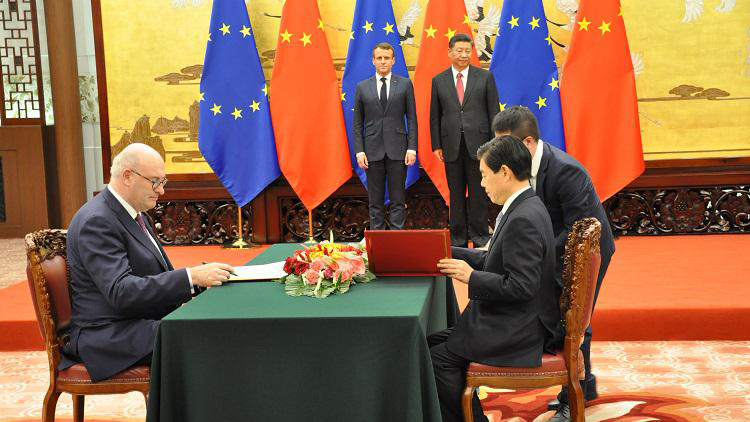Landmark agreement will protect 100 European Geographical Indications in China
Today, the EU and China concluded the negotiations on a bilateral agreement to protect 100 European Geographical indications (GI) in China and 100 Chinese GI in the EU against imitations and usurpation. This landmark agreement is expected to result in reciprocal trade benefits and demand for high-quality products on both sides. Delivering on the commitment made at the last EU-China Summit in April 2019, this agreement is a concrete example of cooperation between the European Union and the People’s Republic of China, reflecting the openness and adherence of both sides to international rules as a basis for trade relations.
Agriculture and rural development Commissioner Phil Hogan said: “European geographical indication products are renowned across the world for their quality. Consumers are willing to pay a higher price, trusting the origin and authenticity of these products, while further rewarding farmers. This agreement shows our commitment to working closely with our global trading partners such as China. It is a win for both parties, strengthening our trading relationship, benefitting our agricultural and food sectors, and consumers on both sides.”
China is the second destination for EU agri-food exports, reaching €12.8 billion (in the 12-month period between September 2018 and August 2019). It is also the second destination of EU exports of products protected as Geographical Indications, accounting for 9% of its value, including wines, agri-food products and spirit drinks.
The Chinese market is a high-growth potential market for European food and drinks, with a growing middle class with a taste for iconic, high-quality and genuine European products. It also has a well-established geographical indication system of its own, with specialties that European consumers could now further discover thanks to this agreement.
The EU list of GI to be protected in China include products such as Cava, Champagne, Feta, Irish whisky, Münchener Bier, Ouzo, Polska Wódka, Porto, Prosciutto di Parma and Queso Manchego. Among the Chinese products, the list includes for example Pixian Dou Ban (Pixian Bean Paste), Anji Bai Cha (Anji White Tea), Panjin Da Mi (Panjin rice) and Anqiu Da Jiang (Anqiu Ginger).
Following the conclusion of the negotiations, the agreement will now go through legal scrutiny. On the EU side, the European Parliament and the Council will then be asked to give their approval. The agreement is expected to enter into force before the end of 2020.
Four years after its entry into force, the scope of the agreement will expand to cover an additional 175 GI names from both sides. These names will have to follow the same registration procedure than the 100 names already covered by the agreement (i.e assessment and publication for comments).
EU-China cooperation on Geographical Indications began over 10 years ago (2006) resulting in the registration and protection of 10 Geographical Indication names on both sides in 2012, the starting block for today's cooperation.
Background
EU quality schemes aim at protecting the names of specific products to promote their unique characteristics, linked to their geographical origin as well as traditional know-how. This is one of the great successes of European agriculture, with more than 3,300 EU names registered as either Protected Geographical Indication (PGI) or Protected Designation of Origin (PDO). A further 1,250 or so non-EU names are also protected within the EU, mostly thanks to bilateral agreements such as this one with China. In value terms, the market for EU geographical indications is around €74.8 billion, and together they account for 15.4% of total EU food and drinks exports.
For More Information
- Joint Press Statement by Commissioner Phil Hogan and Minister Zhong Shan on the End of the Negotiations of an Agreement between the European Union and the Government of the People's Republic of China on Cooperation on, and Protection of, Geographical Indications
- List of European geographical indications protected
- List of Chinese geographical indications protected
Video message from Commissioner Hogan
- Factsheet on the agreement
- 100 European geographical indications set to be protected in China
- EU-China agri-food trade
Source: Delegation of the European Union to China 欧盟联盟驻华代表团
